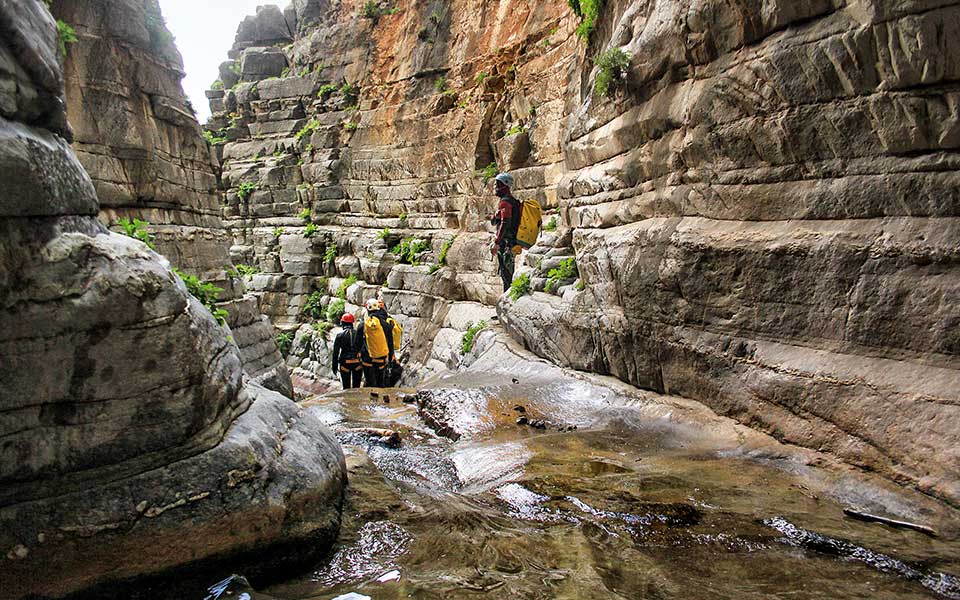The first reference to the Ha Gorge was made by the Italian humanist and antiquarian Ciriaco de’ Pizzicolli (Cyriac of Ancona) in 1445. Impressed by what he saw, he described its river as “a spring of the Dikteon Artemis, that had been fashioned with Nature itself as the artist, and the Creator as its architect.”
Certain myths mention that Artemis and her nymphs bathed in the waters here. And yet, despite its reputation for great natural beauty, the gorge would only be traversed successfully for the first time in 1987.
Yiannis Bromoirakis, an experienced canyoner with 1,500 descents in 27 different countries under his belt, a practiced trainer and the president of the Cretan Canyoning Association (POEF), says that the Ha Gorge is ranked as the favorite among the 250 gorges of Crete and among the 50 most beautiful worldwide.
Crisp, clear waters flow beneath stepped walls of solid rock that rise up as high as 400m; at its narrowest point it is a mere 40cm wide. “As you travel the gorge you really feel that you’re literally inside a cleft in the heart of the mountain,” notes Bromoirakis.
Bordering the Thrypti mountains to its west, the Ha Gorge begins slightly northwest of the small Byzantine church of Aghia Anna and ends near the village of Monastiraki.
The best known of its 28 waterfalls is Mastoras (215m). There are no trees; instead, there are plants growing on the surrounding cliffs, including the shrubby ptilostemon (Ptilostemon chamaepeuce) and Brassica cretica, a wild relative of the cultivated cabbage. As for wildlife, if you’re lucky, you might come across some Cretan frogs (Pelophylax cretensis) or a singing blue rock thrush (Monticola solitarius).












